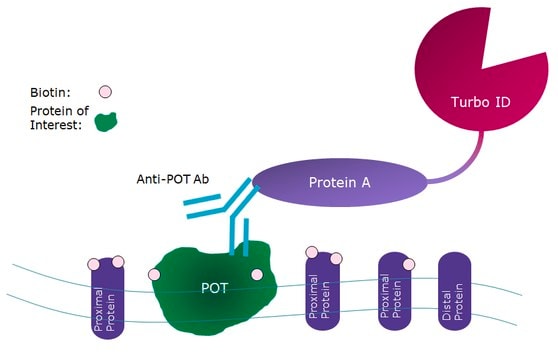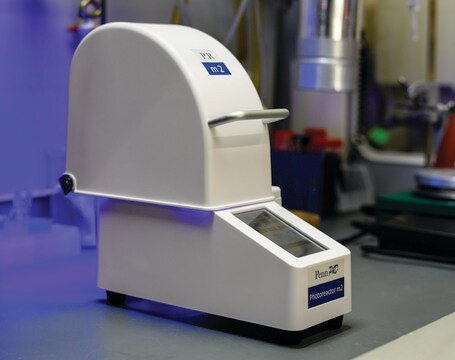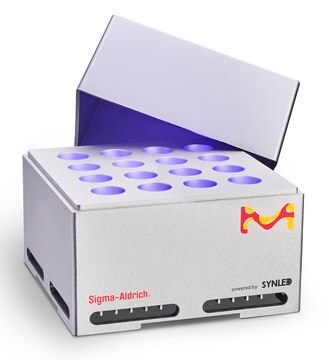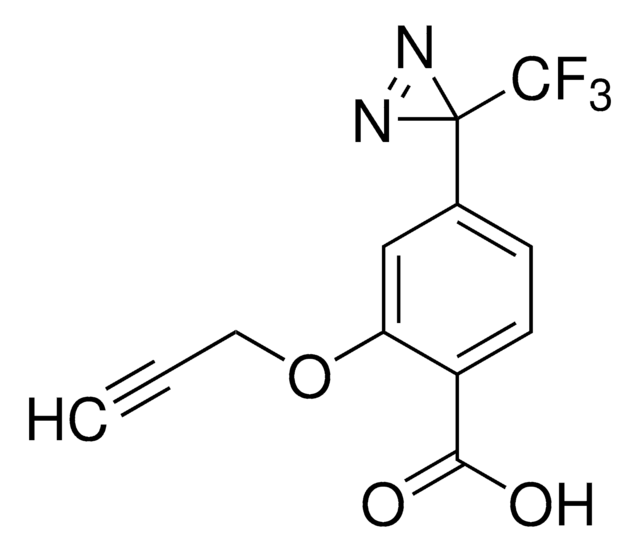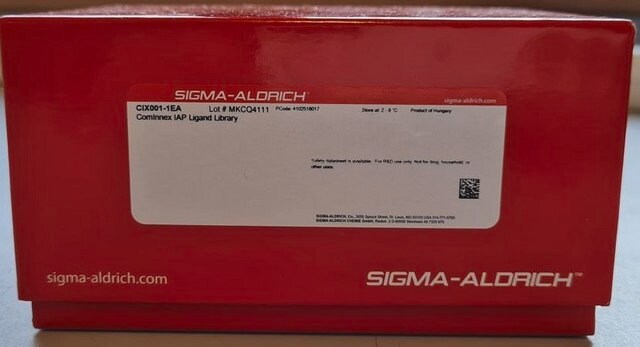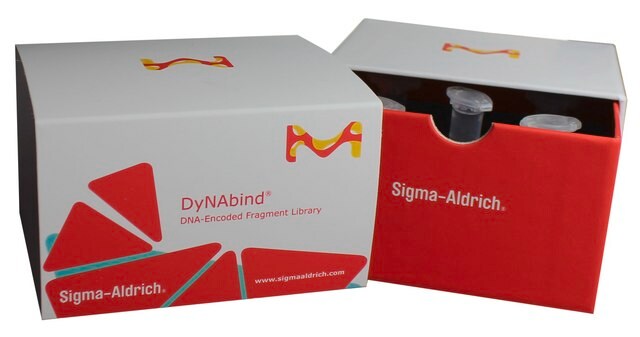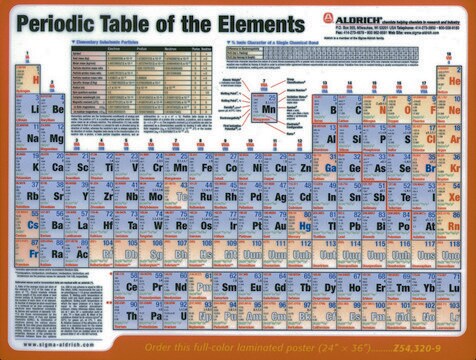ATLASKIT
AtlasKit
Synonyme(s) :
Antibody-photocatalyst conjugate labeling, Microenvironment mapping technology, Photoinduced proximity labeling kit, Protein-protein interaction elucidation technology
About This Item
Produits recommandés
Température de stockage
−20°C
Description générale
The kit provides a step-by-step procedure for conjugating your antibody to a photocatalyst that localizes light-mediated crosslinking to the antibody′s target and surrounding proteins. First, an azide-containing linker is appended to your antibody that ″clicks″ on an iridium photocatalyst. The resulting antibody-photocatalyst conjugate is added to live cells along with a biotinylated diazirine reagent. Analogous to a satelite, the photocatalyst localizes carbene generation from the diazirine and thus covalently modifies surrounding proteins. The biotin tag allows for enrichment of photo-labeled proteins. As shown in Geri et al., the extent of this photo-induced labeling is within a 4 nm radius of the photocatalyst, providing advanced precision for mapping protein interaction networks.
Read more about micromapping in our Technology Spotlight
Protocol available here
Included:
- Conjugation reagents and buffers, photocatalyst, photo-reactive diazirine-biotin, fluorescent standard for validation
Not included:
- Antibodies (primary, secondary, isotype)
- Light-irradiating photoreactor (suggestions below)
- Protein concentration assay (BCA assay recommended)
- Plate reader
- Spin desalting columns (7K MWCO, 2 mL recommended)
Photoreactors commercially available:
Application
Actions biochimiques/physiologiques
Code de la classe de stockage
10 - Combustible liquids
Faites votre choix parmi les versions les plus récentes :
Certificats d'analyse (COA)
It looks like we've run into a problem, but you can still download Certificates of Analysis from our Documents section.
Si vous avez besoin d'assistance, veuillez contacter Service Clients
Déjà en possession de ce produit ?
Retrouvez la documentation relative aux produits que vous avez récemment achetés dans la Bibliothèque de documents.
Articles
A novel method has been developed to tag antibodies with a photoreactive iridium catalyst. Light activates the catalyst to convert a diazirine compound into a reactive carbene intermediate that can label membrane proteins in close proximity. The diazirine adds a biotin to the targeted proteins to allow for capture experiments.
In cases where photoaffinity labeling (PAL) probes are ineffective, Hyas and Dione Kits provide an effective method for small molecule identification by using an Iridium photocatalyst tethered to the molecule under investigation.
Notre équipe de scientifiques dispose d'une expérience dans tous les secteurs de la recherche, notamment en sciences de la vie, science des matériaux, synthèse chimique, chromatographie, analyse et dans de nombreux autres domaines..
Contacter notre Service technique